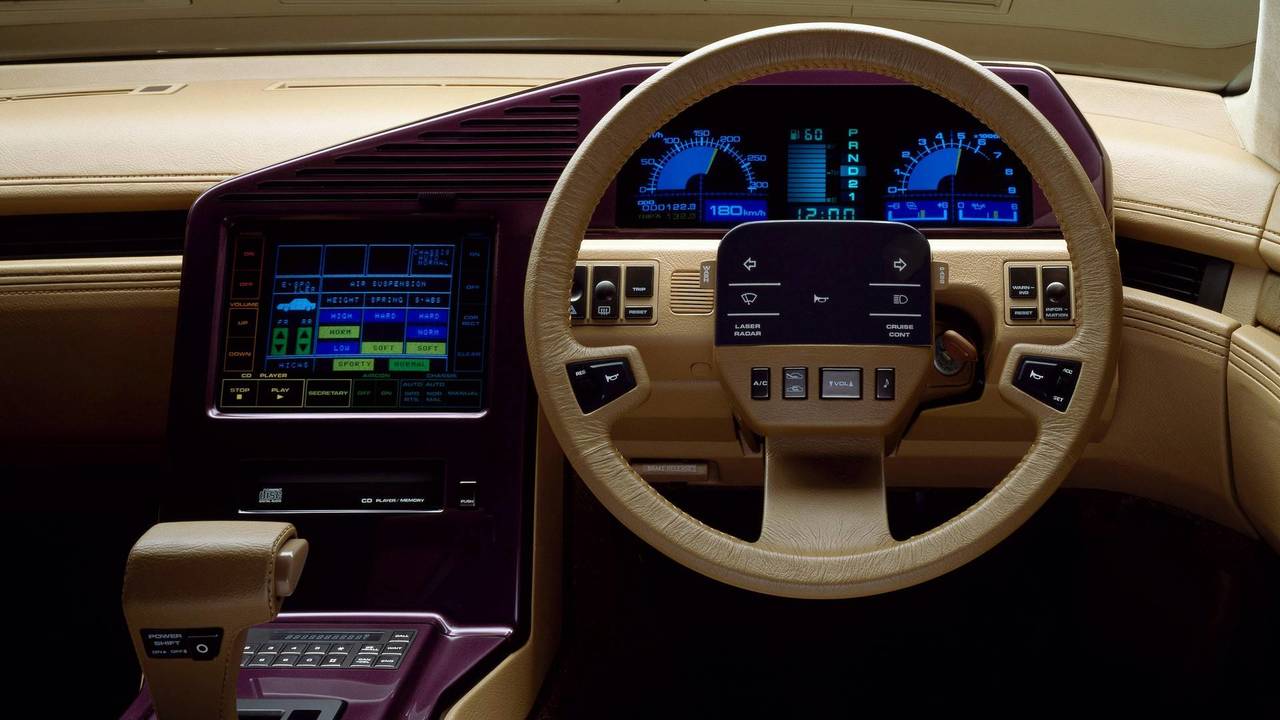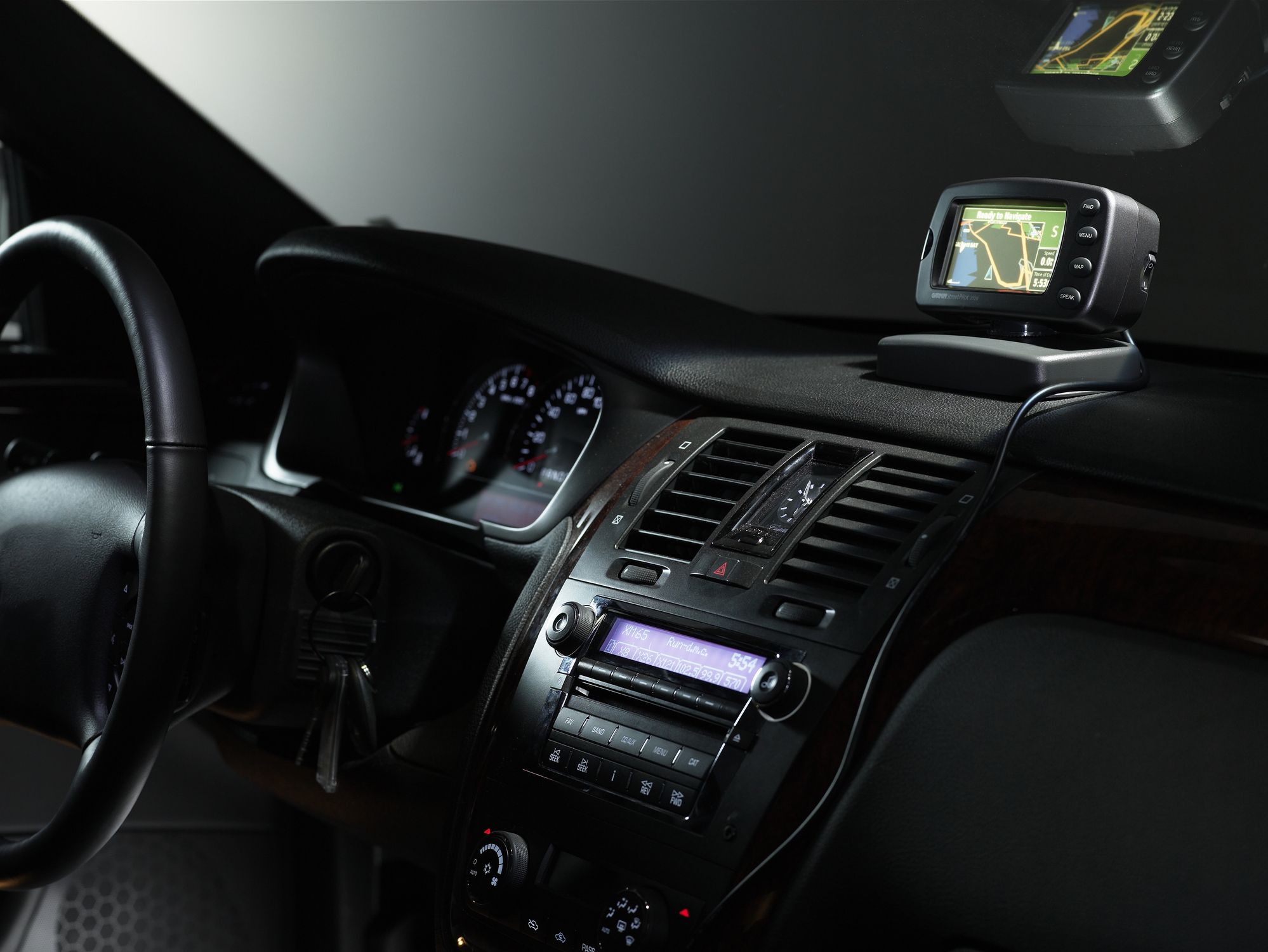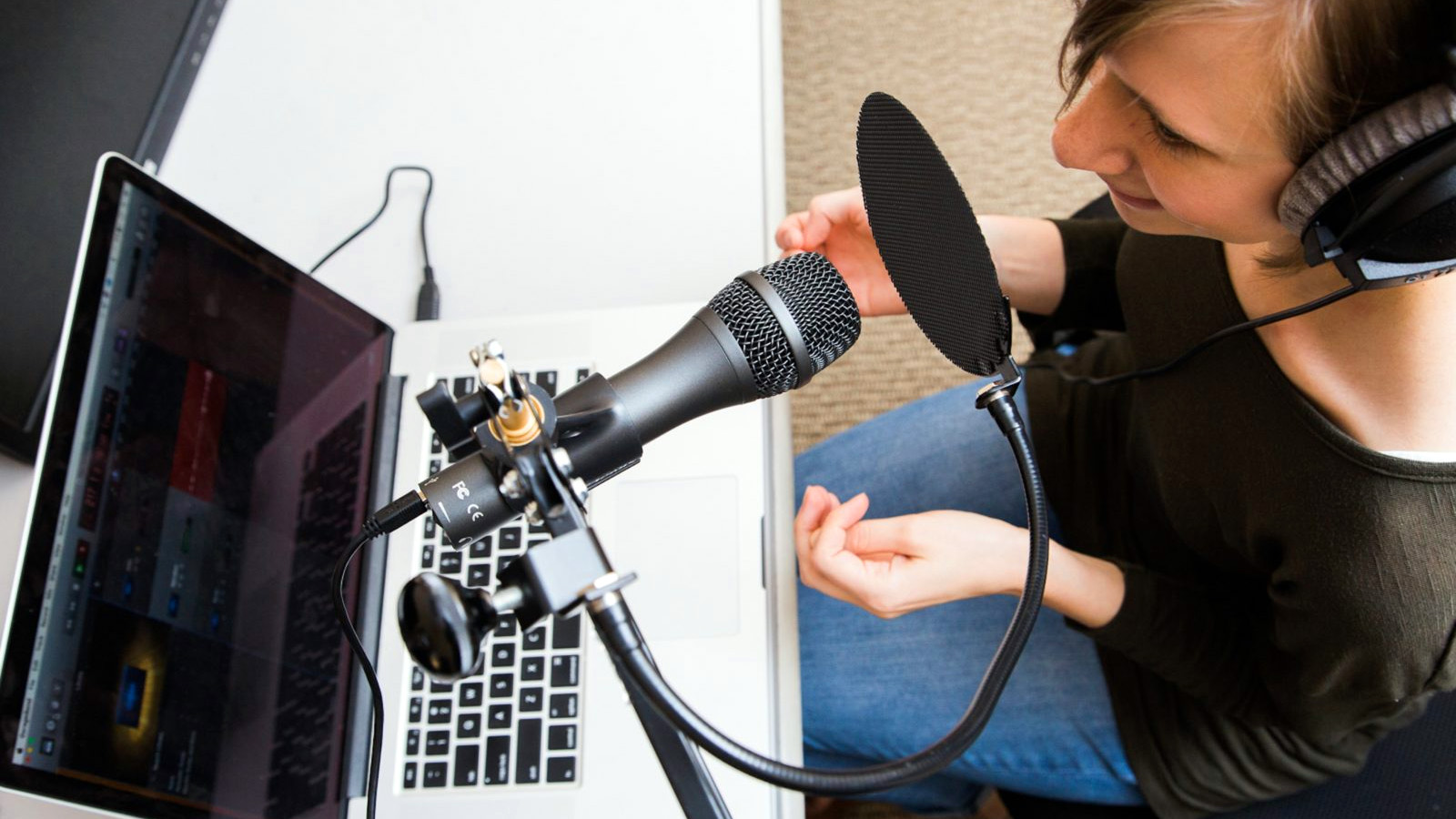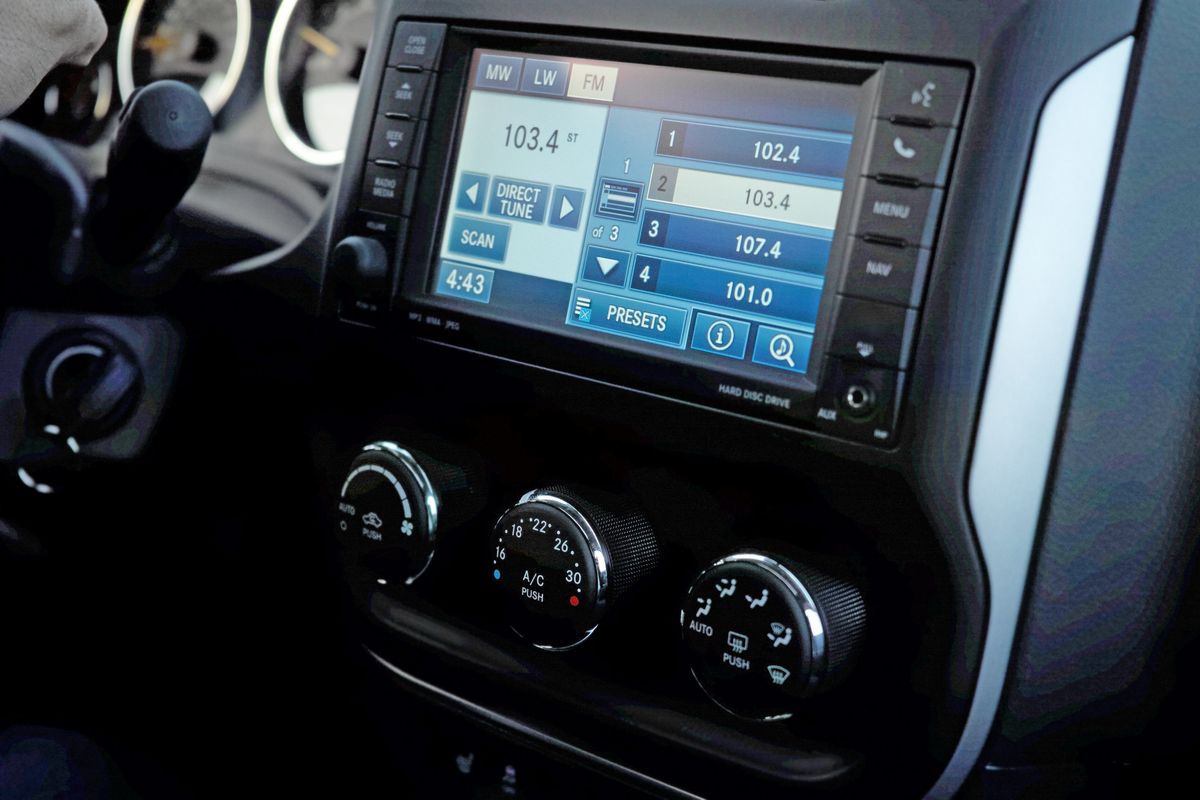Home>Devices & Equipment>Radio>How To Get Better Radio Reception In Car


Radio
How To Get Better Radio Reception In Car
Modified: January 22, 2024
Improve your car's radio reception with these simple tips and tricks. From adjusting your antenna to using a signal booster, discover how to get better radio reception in your car.
(Many of the links in this article redirect to a specific reviewed product. Your purchase of these products through affiliate links helps to generate commission for AudioLover.com, at no extra cost. Learn more)
Table of Contents
Introduction
Welcome to the world of car radio, where music, news, and entertainment accompany us on our journeys. However, there can be times when the radio reception in your car might not be optimal, resulting in frustratingly interrupted signals and static-filled sounds. Fortunately, there are several measures you can take to improve your car radio reception and enjoy a seamless listening experience.
In this article, we will delve into the factors that affect car radio reception, explore ways to find the best radio stations, and discuss techniques for improving antenna placement and performance. Additionally, we will explore the use of signal boosters or amplifiers and strategies for reducing interference. Lastly, we will touch upon the importance of maintaining and servicing your car radio system for long-lasting performance.
Whether you are a music enthusiast, a news junkie, or simply enjoy listening to your favorite shows, having good car radio reception is crucial for an enjoyable and immersive experience. So let’s get started on our journey to obtaining better radio reception in your car!
Understanding Car Radio Reception
Before we dive into improving car radio reception, let’s take a moment to understand how it works. Car radio reception is dependent on the ability of your car radio system to pick up radio waves and convert them into audible sound. The radio waves are transmitted by radio stations and travel through the air to reach your car’s antenna. The antenna then captures these waves and sends them to the radio tuner, which decodes the signal and plays it through the speakers.
The quality of radio reception can be influenced by various factors, including the distance between your car and the radio station, the terrain you are driving in, and external interference. Understanding these factors can help you identify the sources of poor reception and take appropriate measures to improve it.
One of the primary factors affecting car radio reception is the distance between your car and the radio station. As you drive further away from the station, the signal strength decreases, leading to weaker reception. Additionally, the quality of reception can be influenced by geographical factors such as hills, tall buildings, and tunnels that can obstruct the radio waves. These physical barriers can cause signal loss or interference, resulting in poor reception.
Another factor to consider is external interference. Your car radio system can be affected by electrical equipment, power lines, and other vehicles nearby. These sources of electromagnetic interference can interfere with the radio signal and result in static or distortion in the audio.
By understanding how car radio reception works and the factors that affect it, you can begin to troubleshoot and implement solutions to improve the overall reception in your car. In the following sections, we will explore various techniques and strategies to enhance car radio reception and enjoy a clear and uninterrupted listening experience.
Factors Affecting Car Radio Reception
Several key factors can affect the quality of car radio reception. Understanding these factors can help you identify potential issues and improve the overall reception in your car.
Distance from the radio station: The distance between your car and the radio station plays a significant role in reception quality. As you move farther away from the station, the signal strength decreases, leading to weaker reception. If you live in a rural area or frequently travel long distances, you might experience more pronounced reception issues due to the distance.
Geographical obstacles: The surrounding terrain and physical structures can obstruct radio waves, resulting in weaker reception. Hills, mountains, tall buildings, and tunnels can all contribute to signal loss or interference. If you frequently encounter these obstacles during your commute, it can impact your radio reception.
Electromagnetic interference: Electrical equipment, power lines, and other vehicles can produce electromagnetic interference, which can disrupt the radio signal. This interference manifests as static, distortion, or even complete signal loss. It’s worth noting that certain aftermarket modifications to the car, such as LED lights or poorly shielded wiring, can also introduce interference.
Weather conditions: Atmospheric conditions, including heavy rain, thunderstorms, and even sunspots, can affect radio reception. These weather phenomena can temporarily degrade the quality of radio signals, resulting in weaker reception or intermittent disruptions.
Antenna quality and placement: The design and placement of your car’s antenna are crucial factors in reception quality. A high-quality antenna designed for optimal radio reception will typically deliver better results. Additionally, the location of your antenna, such as on the roof or near metallic objects, can impact signal reception. Ideally, the antenna should be positioned to maximize exposure to radio waves while avoiding any obstructions.
By considering these factors, you can gain insight into the potential causes of poor car radio reception. In the next sections, we will explore various ways to overcome these challenges and achieve better reception in your car.
Finding the Best Radio Stations
One of the key aspects of enjoying good car radio reception is to find and tune in to the best radio stations available in your area. Here are some tips to help you discover the radio stations that provide the strongest signals and the content you enjoy:
Research local radio stations: Take some time to research and familiarize yourself with the radio stations in your region. Find out which stations have the best coverage and signal strength. You can consult online radio directories or ask friends and family for recommendations.
Check station frequencies: Different radio stations operate on different frequencies. Experiment with different frequency ranges to see if there are stations that offer better reception. Sometimes, a slight change in frequency can significantly improve signal strength and audio clarity.
Use radio station apps: Many radio stations now have their own dedicated apps, which allow you to stream their content directly on your smartphone. These apps often provide high-quality audio and can be a great alternative if the FM/AM reception is weak in your area.
Consider satellite radio: Satellite radio services offer a wide range of channels with consistent signal strength and minimal interference. Investing in a satellite radio subscription can provide you with a vast selection of music, news, and entertainment, regardless of your location.
Utilize online radio platforms: There are numerous online radio platforms that offer a diverse range of stations and genres. Services like Pandora, Spotify, and TuneIn allow you to stream radio stations from around the world. These platforms often provide excellent audio quality and can be accessed on your smartphone or through in-car connectivity systems.
Seek specialty stations: Depending on your preferences, you may find that specialty radio stations, such as classical music or talk radio, offer better reception and programming tailored to your interests. Explore different genres and categories to find stations that consistently provide a strong signal.
By actively searching for the best radio stations and experimenting with different frequencies and platforms, you can improve your chances of finding stations with superior reception and content that resonates with you. In the next sections, we will discuss techniques to optimize your antenna placement and enhance its performance for optimal reception.
Improving Antenna Placement
The proper placement of your car’s antenna is crucial for maximizing radio reception. Here are some tips to help you improve antenna placement and enhance the overall signal strength:
Roof-mounted antennas: Roof-mounted antennas tend to offer better reception compared to other antenna placements. Placing the antenna on the highest point of the car allows for better line-of-sight with radio signals and reduces obstructions that can weaken reception. If your car doesn’t have a built-in roof antenna, you can consider installing an aftermarket roof-mounted antenna.
External antennas: In some cases, using an external antenna can greatly improve reception. External antennas, such as mast antennas or shark fin antennas, offer superior signal capture due to their larger size and better positioning. If your car supports external antennas, it might be worth exploring this option for enhanced reception.
Avoid obstructions: Ensure that the antenna is not obstructed by any objects, such as roof racks, roof boxes, or other accessories. These obstructions can interfere with the antenna’s ability to receive radio signals effectively. If possible, clear the area around the antenna for optimal reception.
Consider antenna amplifiers: Antenna amplifiers, also known as signal boosters, can be installed to enhance the strength of the received signals. These devices amplify weak signals, improving reception in areas with low signal coverage. It’s important to note that antenna amplifiers should only be used in situations where the signal strength is consistently weak, as using them in areas with strong signals can cause signal overload and degrade reception quality.
Adjust antenna angle: Experiment with adjusting the angle of the antenna to find the best reception. Tilting the antenna slightly in different directions can help find the optimal position for receiving signals. It may require some trial and error to determine the ideal angle for your specific car and local conditions.
Coil or extendable antennas: If your car has a coil or extendable antenna, ensure that it is fully extended. These types of antennas are designed to be extended for better reception. If the antenna is damaged or doesn’t extend properly, consider getting it repaired or replaced.
By paying attention to antenna placement and making adjustments as needed, you can significantly improve the reception in your car. In the next section, we will delve into techniques for enhancing antenna performance to further optimize your radio experience.
Enhancing Antenna Performance
While proper antenna placement is important, there are additional steps you can take to enhance the performance of your car’s antenna and improve radio reception. Here are some techniques to consider:
Upgrade your antenna: If you are still using the factory-installed antenna, consider upgrading to a higher-quality aftermarket antenna. Aftermarket antennas are often designed with better reception capabilities, allowing for stronger and more stable signals.
Use an antenna amplifier: Antenna amplifiers can boost weak signals, increasing the range and quality of reception. These devices are particularly useful in areas with low signal coverage. However, it’s important to note that antenna amplifiers should only be used when necessary, as using them in areas with strong signals can cause signal overload and distort reception.
Ensure proper grounding: A well-grounded antenna is essential for optimal reception performance. Make sure that the antenna is securely and properly grounded to the car’s chassis. This helps to reduce interference and improve signal reception. Consult the manufacturer’s instructions or seek professional assistance if needed.
Inspect antenna connections: Periodically check the antenna connections to ensure they are clean and secure. Corroded or loose connections can weaken the signal and result in poor reception. Clean the connections with contact cleaner if necessary, and tighten any loose connections to ensure a solid signal connection.
Consider a signal booster: Signal boosters, also known as preamplifiers, can be installed between the antenna and the radio to amplify weak signals. These devices can provide a significant enhancement to signal strength and reception quality, particularly in areas with low signal coverage. However, it’s important to ensure that the booster is compatible with your specific car radio system and follow the manufacturer’s instructions for installation.
Explore aftermarket radio models: In some cases, the stock radio in your car may not provide the best reception. Upgrading to an aftermarket radio receiver can offer improved sensitivity and selectivity, allowing for better reception and a wider range of stations to choose from.
By implementing these techniques, you can enhance the performance of your car’s antenna and significantly improve radio reception. In the next section, we will discuss the use of signal boosters or amplifiers to further amplify weak signals and improve reception quality.
Using Signal Boosters or Amplifiers
If you are facing persistent weak signal issues or poor radio reception in your car, using a signal booster or amplifier can be a viable solution to enhance the signal strength and improve overall reception quality. Here’s what you need to know:
Types of signal boosters: There are two main types of signal boosters commonly used in car radio systems: in-line signal boosters and antenna-mounted amplifiers. In-line signal boosters are installed between the car’s antenna and radio unit, while antenna-mounted amplifiers are connected directly to the antenna.
In-line signal boosters: In-line signal boosters are small devices that amplify the radio signals received by the antenna before they reach the radio unit. These boosters improve signal strength and reduce noise and interference, resulting in clearer reception. In-line boosters are relatively easy to install and can be powered directly from the car’s electrical system or through a USB connection.
Antenna-mounted amplifiers: Antenna-mounted amplifiers are mounted directly onto the car’s antenna and amplify the signals captured by the antenna before sending them to the radio unit. These amplifiers are typically more effective at boosting weak signals, as they amplify the signal at the source. Antenna-mounted amplifiers require proper installation, and it’s crucial to follow the manufacturer’s instructions for mounting and wiring.
Choosing the right booster or amplifier: When selecting a signal booster or amplifier, consider factors such as compatibility with your car’s radio system, the type of booster (in-line or antenna-mounted), and the desired level of amplification. It’s essential to choose a reputable brand and ensure the booster is designed for use in car radio systems.
Installation and power source: Proper installation is crucial for optimal performance. It’s important to follow the manufacturer’s instructions and, if needed, consult a professional for assistance. In terms of power source, some boosters or amplifiers may require a direct connection to the car’s electrical system, while others can be powered via USB or other means. Ensure that the power source is suitable for your specific booster or amplifier.
Signal overload considerations: While signal boosters and amplifiers can significantly improve reception, it’s important to note that excessive amplification can lead to signal overload. Signal overload occurs when the booster or amplifier amplifies not only the desired signal but also unwanted signals or interference, resulting in distorted audio. Carefully adjust the amplification level to avoid signal overload and maintain the best reception quality.
Signal boosters or amplifiers can be effective tools for improving radio reception in your car, especially in areas with weak or intermittent signals. However, it’s important to choose the right type of booster or amplifier, ensure proper installation, and be mindful of signal overload. In the next section, we will discuss strategies to reduce interference and further optimize your car’s radio reception.
Reducing Interference
Interference can significantly impact the quality of car radio reception, resulting in static, distortion, or even complete signal loss. Fortunately, there are several strategies you can employ to reduce interference and improve the overall radio listening experience in your car:
Minimize electrical equipment: Electrical equipment within your car, such as cell phones, tablets, and chargers, can generate electromagnetic interference that can disrupt radio signals. To minimize interference, try to keep these devices away from the car’s radio system, especially the antenna. Additionally, powering off or putting devices on airplane mode can further reduce interference.
Eliminate aftermarket modifications: Aftermarket modifications such as LED lights, poorly shielded wiring, or modified electrical systems can introduce interference. These modifications may emit unwanted signals that disrupt radio reception. It is advisable to remove or properly shield these modifications to minimize interference.
Choose shielded audio cables: When connecting external audio devices, such as smartphones or MP3 players, to your car’s audio system, use shielded audio cables. Shielded cables help minimize interference from external sources and ensure cleaner audio signals.
Check spark plugs and ignition system: Faulty spark plugs or an outdated ignition system can generate electrical noise that interferes with radio reception. Regular maintenance and replacement of spark plugs and ignition components is essential to reduce interference and maintain optimal radio reception.
Antenna grounding: Proper grounding of the car’s antenna can minimize interference caused by electrical noise within the car. Ensure that the antenna is securely grounded to the car’s chassis as per the manufacturer’s guidelines.
Check for faulty components: Faulty radio components, such as the radio tuner or amplifier, can introduce noise and interfere with reception. If you suspect any component to be faulty, have it inspected and repaired or replaced by a professional to restore optimal radio performance.
Avoid congested signal frequencies: In densely populated areas, certain radio frequencies may be overcrowded, leading to interference. Try scanning for less crowded frequencies or stations to improve reception and reduce interference. Experimenting with different frequencies can help you find stations with clearer signals.
Drive away from interference sources: If you are experiencing interference in a specific area, such as near power lines or large industrial complexes, driving away from these sources can help improve reception. Moving to an area with fewer sources of interference allows the radio system to capture cleaner signals.
By implementing these strategies, you can effectively reduce interference and enhance your car radio reception. In the final section, we will discuss the importance of maintaining and servicing your car’s radio system for long-lasting performance.
Maintaining and Servicing the Car Radio System
To ensure optimal radio reception and performance in your car, it is important to regularly maintain and service the car radio system. Here are some key maintenance and servicing tips to keep in mind:
Keep the antenna clean: Over time, dirt, dust, and debris can accumulate on the car’s antenna, obstructing radio signals and reducing reception quality. Regularly inspect and clean the antenna to maintain optimal performance. Use a soft cloth or sponge with mild soap and water to gently remove any dirt or grime. Avoid using abrasive materials or harsh chemicals that might damage the antenna’s surface.
Check antenna connections: It is advisable to periodically inspect the connections between the antenna and the radio unit. Loose or corroded connections can lead to poor reception quality. If you notice any loose or corroded connections, clean them and securely tighten them to ensure a solid connection.
Check for damaged cables or wires: Inspect the cables and wires connected to the car’s radio system for any signs of damage, such as fraying or cuts. Damaged cables can result in weak signals or interference. If you find any damaged cables, it is recommended to have them replaced by a professional.
Keep the radio tuner updated: Many car radios today have software or firmware updates available from the manufacturer. These updates can include improvements to reception, bug fixes, and new features. Check the manufacturer’s website or contact a local dealership to inquire about any available updates for your car’s radio tuner.
Regularly service the car’s electrical system: The health of your car’s electrical system can directly impact the performance of the radio system. Regular maintenance and servicing of the car’s electrical system, including the battery, alternator, and wiring, can help ensure optimal power delivery to the radio unit and minimize the risk of interference.
Listen for any unusual sounds: Pay attention to any unusual sounds or disruptions when using the car radio. Distorted audio, sudden volume changes, or intermittent cutouts can indicate underlying issues with the radio system. If you notice any such problems, it is recommended to have the system inspected and serviced by a professional technician.
Regularly replace aging components: Over time, various components of the car’s radio system, such as speakers, amplifier, or the radio unit itself, may begin to degrade or wear out. If you notice a significant decrease in audio quality or reception despite proper maintenance, consider replacing aging components with higher-quality ones to restore optimal performance.
By following these maintenance and servicing practices, you can prolong the lifespan of your car’s radio system and ensure consistent and high-quality reception. It is always beneficial to consult a professional technician for any complex issues or if you are unsure about performing any maintenance tasks yourself.
Conclusion
Having a reliable and well-performing car radio is essential for a pleasant driving experience. With the right strategies and techniques, you can improve the radio reception in your car and enjoy uninterrupted music, news, and entertainment on your journeys.
We began by understanding the factors that affect car radio reception, such as distance from the station, geographical obstacles, and interference. By familiarizing ourselves with these factors, we gained insight into the sources of poor reception and how to address them.
We then explored ways to find the best radio stations, including researching local stations, checking frequencies, utilizing radio station apps, considering satellite radio, and exploring online radio platforms. By actively seeking out stations with strong signals and content that resonates with us, we can enhance our listening experience.
Next, we discussed techniques for improving antenna placement, such as roof-mounted antennas, external antennas, and avoiding obstructions. We also explored methods for enhancing antenna performance by upgrading antennas, using amplifiers or boosters, and adjusting antenna angles.
To further optimize radio reception, we delved into strategies for reducing interference. Minimizing electrical equipment, eliminating aftermarket modifications, choosing shielded cables, and checking for faulty components are effective ways to minimize interference and improve reception quality.
Additionally, we explored the use of signal boosters or amplifiers to amplify weak signals and improve reception in areas with low signal coverage. We discussed the different types of boosters, installation considerations, and the importance of avoiding signal overload.
Lastly, we highlighted the significance of maintaining and servicing the car radio system. Regularly cleaning the antenna, checking connections, keeping the radio tuner updated, servicing the electrical system, and replacing aging components are essential for long-lasting performance and optimal reception.
In conclusion, by understanding the factors that affect car radio reception, optimizing antenna placement, reducing interference, and maintaining the radio system, you can significantly improve the quality and reliability of your car radio reception. By implementing these strategies, you can enjoy a seamless and enjoyable listening experience during your journeys.











